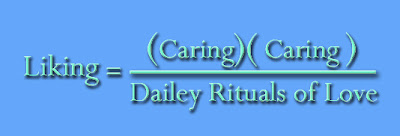The Metamorphic Mathematical Poem

From Poems 1972-1997 Copyright © 1997 by Scott Helmes

"Philosophic cocktails" by Thierry Brunet 2007
I would like to introduce a new term for a technique used in mathematical poetry. The first person I know to have used this technique is Scott Helmes. His poem from 1997 (upper image) illustrates the technique well. One can see that it has five structures separated by four equal signs. What occurs is that the mathematical poem contains several structures (equations) all set equal to each other. In effect, the poem reads as a series of statements that metamorphose into each other through the duration while reading the poem.
A metamorphic mathematical poem could possess unlimited structures and equal signs however; it must contain at least three structures separated by two equal signs to be considered metamorphic.
The aesthetically interesting thing about these poems is that the target domain and the source domain for the ‘overall whole’ metaphor bounces and shimmers in ones mind as you swap or rotate the domains around each other. This is due to there being multiple domains for the target and source. **
**The metaphor nomenclature borrowed from the cognitive scientist George Lakoff can be viewed in more detail at this link.































